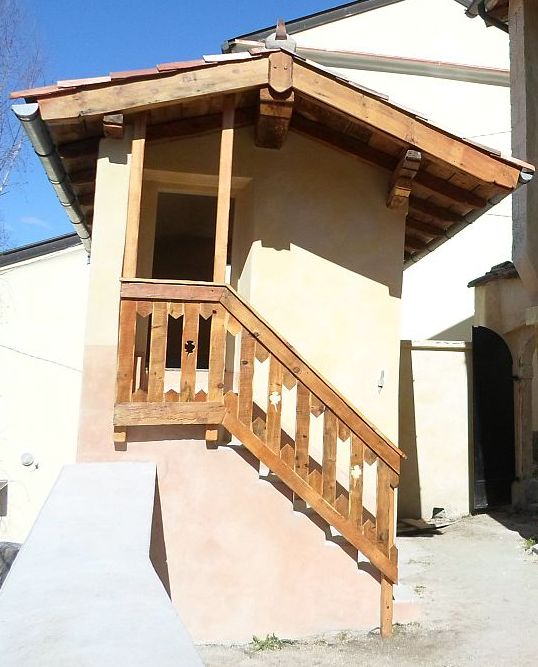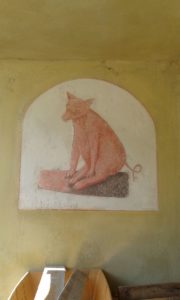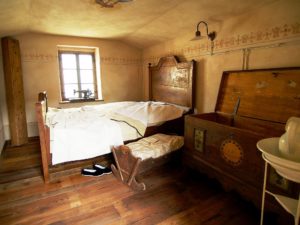In the second half of the 19th century, a small building was built in the court and initially used as a woodshed; in the main house, on the other hand, two wall paintings were realised, two of which are still visible.
Hïšica

Near the entrance to the old kitchen there was the painting of a smiling piglet sitting on a pillow, a symbol of abundancy, while on the opposite outer wall / timplin there was a trilogy representing: in the upper part, the Madonna della seggiola; in the central part, the chalice, the host, God’s eye – protector of humanity (or divine providence), and two pierced hearts (which in our valleys symbolise trade); in the lower part, Jesus Christ on the cross. The figures appearing in this work, especially the chalice with the host, have most likely been painted in remembrance of don Odorico Buttolo Ploc (1768 – 1845), parish priest in the Resia Valley from 1815 to 1845, who spent the first years of his life in this very house.
At the beginning of the 20th century some rooms were made in the small woodshed. The upper one was certainly used as a bedroom, and its walls and ceiling were plastered and decorated. The room below is believed to have been, at least for some time, a unit where milk / ćanibica was stored before cheesmaking in the near dairy, which, between 1901 and 1925, was located under the sacristy of the adjacent church. People used to store the milk in specific containers called mult, which had a capacity of 5 litres each. They functioned as units of measure for the cow’s product which, already in the Middle Ages, could be used to pay the census, i.e. the taxes every farmer had to pay to the Moggio abbey. The markings on the wall next to the kitchen door refer to further smaller units of measure used to quantify the milk that was given by more families. Every X corresponded to ten ladles of milk. Every ladle / kop, contained almost half a litre of milk. This last measure was marked with an “I” to distinguish it from the others.


